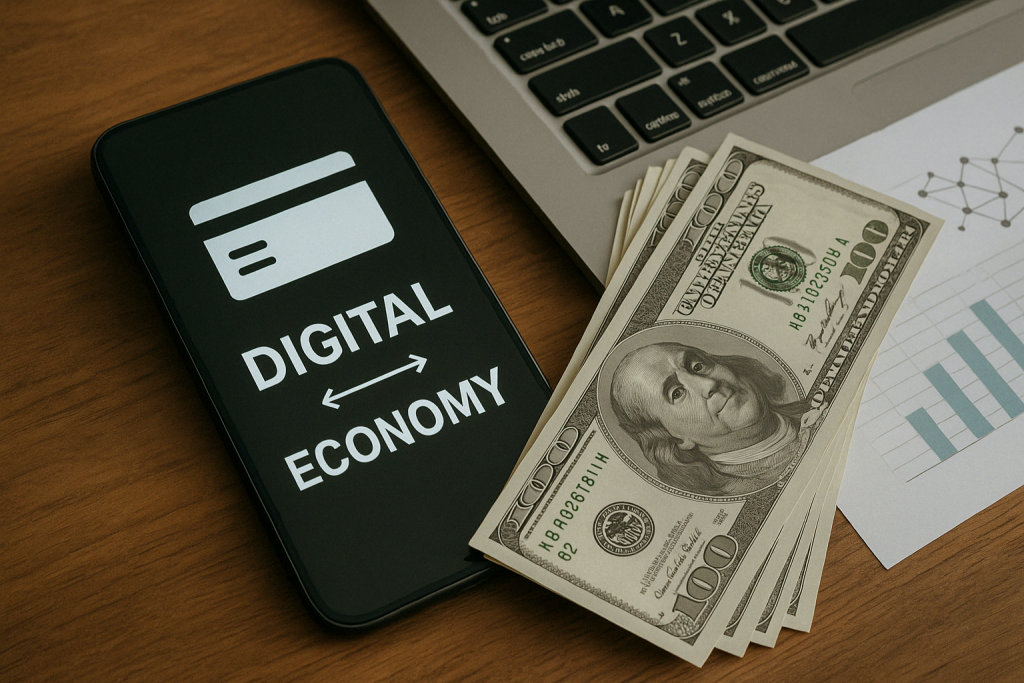The rapid transformation of the U.S. credit market is a testament to the profound impact of digital innovation. As the American economy increasingly shifts towards a digital environment, the intersection between credit and technology has become a focal point. Digital innovation is reshaping how Americans borrow, lend, and manage credit, emphasizing the crucial role played by the credit sector in this transition.
This shift is not just about convenience but also about expanding opportunities and reaching underserved populations. The U.S. credit market has become a vibrant arena for technological advancements, with companies and institutions racing to adapt. This transformation highlights the importance of credit in driving economic growth and innovation, setting the stage for future developments that promise to redefine financial interactions.
How fintechs are redefining the U.S. credit market

The rise of fintech companies and digital banks has been a game-changer for the credit landscape in the United States. These entities are leveraging technology to offer more accessible, efficient, and user-friendly financial services.
With their innovative approaches, fintechs are challenging traditional banking models and paving the way for unprecedented credit innovation in the U.S. By employing artificial intelligence and data analysis, these platforms can assess creditworthiness in ways that traditional models cannot.
Companies like Affirm, Upstart, and Chime exemplify this trend. They utilize AI and alternative data sources to provide credit to consumers who might otherwise be overlooked by conventional banks. Such digital credit platforms are not only lowering barriers to access but also personalizing financial experiences. Consequently, they are reshaping the way Americans engage with credit, fostering a more inclusive and dynamic financial ecosystem.
The role of big data and AI in credit scoring
Artificial intelligence and big data are pivotal in the evolution of credit scoring models. Traditional methods often relied heavily on limited data sets, like credit histories, which excluded many potential borrowers. However, the integration of AI-powered algorithms and vast alternative datasets is transforming credit assessments. These advancements are bringing previously “invisible” consumers into the financial fold.
Terms like alternative credit scoring reflect this shift, as more nuanced, comprehensive evaluations are now possible. By incorporating factors like social behavior and online transactions, these models offer a broader view of borrower creditworthiness. AI-powered lending decisions not only enhance accuracy but also contribute to fairer, more equitable access to credit, driving significant change in the U.S. credit market.
Traditional banks’ response to the digital shift
In response to the rise of fintechs, traditional banks are not sitting idle. Major players like Chase and Bank of America are aggressively digitalizing their services to stay competitive. The U.S. credit market is also being reshaped by these institutions embracing digital tools and techniques. They are investing in apps, automating credit approvals, and adopting open APIs to streamline and modernize customer experiences.
These strategic moves are designed to retain and grow their customer base in an increasingly digital world. By incorporating these technological advancements, traditional banks are ensuring they remain relevant and effective in a rapidly changing landscape. The focus is on offering enhanced convenience and improved service delivery, signaling the importance of digital transformation in the broader financial industry.
Challenges and risks of the digital credit ecosystem
Despite the benefits, the digital credit ecosystem is not without its challenges. Concerns around data security, digital exclusion, and the risk of over-indebtedness through easily accessible credit apps are prevalent. These digital lending risks necessitate comprehensive strategies to protect consumers and maintain market stability. Regulatory adaptation in the U.S. credit market is essential to address these issues effectively.
Laws governing credit need to evolve to keep pace with technological advancements. Ensuring robust data protection frameworks and inclusive access are critical. Striking a balance between innovation and regulation is vital to foster a sustainable digital credit ecosystem. This approach will protect consumers while encouraging continued growth and evolution within the market.
What’s next for the U.S. credit market?
Looking ahead, the future of the U.S. credit market appears promising but requires careful navigation. Trends towards personalization and credit on-demand are likely to become more pronounced, driven by technological advancements. These innovations promise to tailor financial products more closely to individual consumer needs, enhancing user experiences.
However, with such advancements come additional regulatory and ethical considerations. Stakeholders must anticipate and prepare for these changes, ensuring that future developments benefit all market participants. Ultimately, the strategic integration of technology in the credit sector will continue to define its evolution, securing the position of the U.S. credit market as a leader in global financial innovation.






